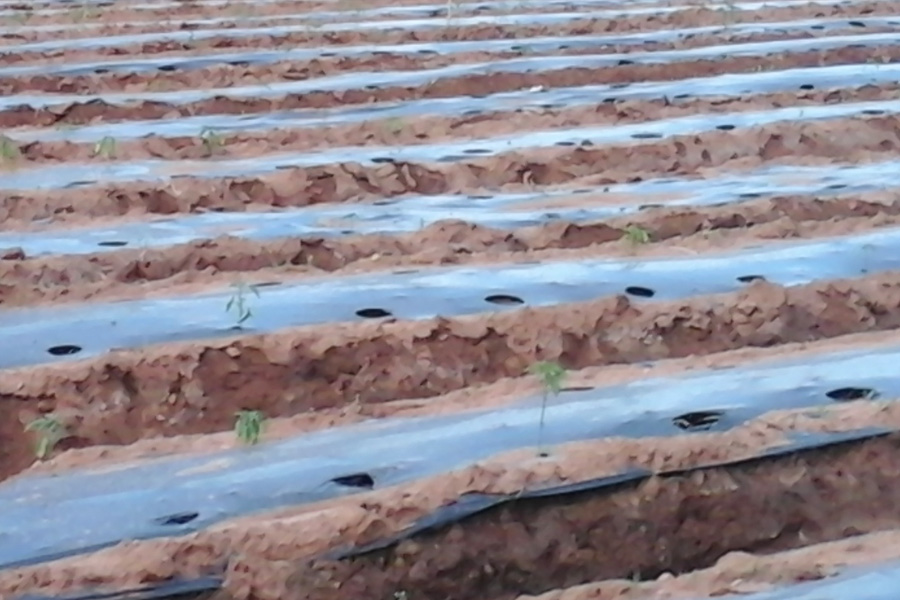Maximizing Benefits and Tackling Challenges of Plastic Mulch in Crop Production
Plastic mulch has become a popular choice in agricultural practices due to its potential benefits, particularly for high-value crops like strawberries, tomatoes, and peppers. While its usage raises ethical considerations, understanding the advantages and challenges of a plastic mulch layer is vital for informed decision-making in the farming community. In this blog post, we will explore the benefits, challenges, and specialized techniques associated with plastic mulch in cannabis crop production.
Benefits of Plastic Mulch in Cannabis Cultivation
- Water Efficiency:
Utilizing plastic mulch significantly reduces soil drying, leading to a remarkable decrease in water usage and increased water efficiency. Field trials have shown a reduction in water consumption by 50-70% during spring and early summer cultivation. - Weed Suppression:
Plastic mulch works effectively as a weed preventer within the covered areas, saving farmers valuable time and resources required for multiple weeding passes. However, it is important to note that weed management is still necessary in the walkways between beds and in crop planting holes. - Soil Warming:
Plastic mulch warms the root zones, providing optimal soil conditions for crops like cannabis and extending the growing season in regions with suboptimal temperature ranges. Temperatures under plastic mulch can be up to 30 degrees warmer than ambient temperatures, supporting improved growth rates and reduced transplant shock. - Increased Yield:
Tomatoes cultivated with plastic mulch have demonstrated yield increases of up to 20%. Further research is needed to determine the most beneficial plastic color for cannabis production.
Challenges of Plastic Mulch in Cannabis Cultivation
- Soil Preparation:
Proper soil preparation is crucial before laying a plastic mulch layer. The soil must be worked to achieve excellent tilth with minimal aggregate, as large chunks or partially decomposed cover crop can hinder the proper placement of plastic mulch. - Precision and Patience:
Laying plastic mulch requires meticulous attention to detail and micro-adjustments to ensure its flawless placement. Windy conditions should be avoided for successful deployment. - View and Irrigation Limitations:
The soil is obscured under the plastic mulch, making it challenging to detect pest damage or observe irrigation issues. Thorough and effective irrigation becomes more difficult due to reduced visibility and potential line obstruction, demanding careful management.
Specialized Techniques and Considerations
- Harden Off Plants:
Plants such as cannabis plants grown under plastic mulch may require additional time to adjust to the transition outdoors, particularly when conditions vary during the spring season. A balance between utilizing greenhouse conditions for vigorous growth and proper plant acclimation should be sought. - Plastic Mulch Removal:
Removal of plastic mulch at the end of the crop cycle introduces an extra labor-intensive step. Specialized tools or mechanized processes can accomplish this. Despite efforts, some micro-plastic residue may remain in the field. - Hiring Custom Ag Work:
For farmers dealing with large acreage and seeking specialized expertise, considering the services of experienced professionals in plastic mulch laying can help ensure optimal results.
While plastic mulch presents both benefits and challenges in agricultural practices, a careful evaluation of its usage is essential. Considering the specific needs of high-value crops, water efficiency, weed control, soil temperature, and labor considerations will contribute to informed decision-making and successful implementation of plastic mulch in growing cannabis.
